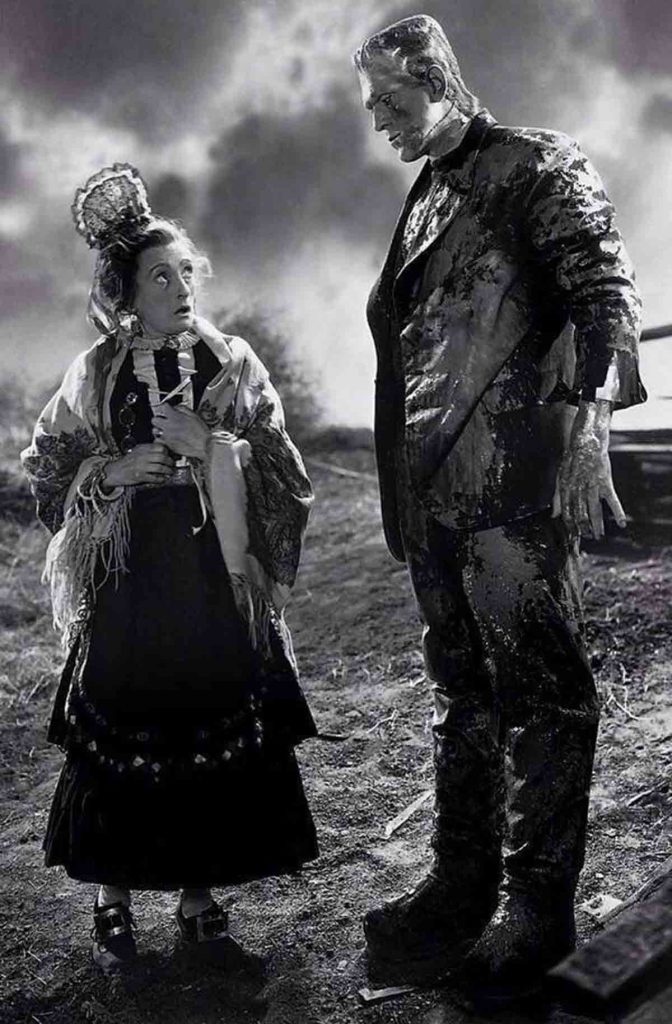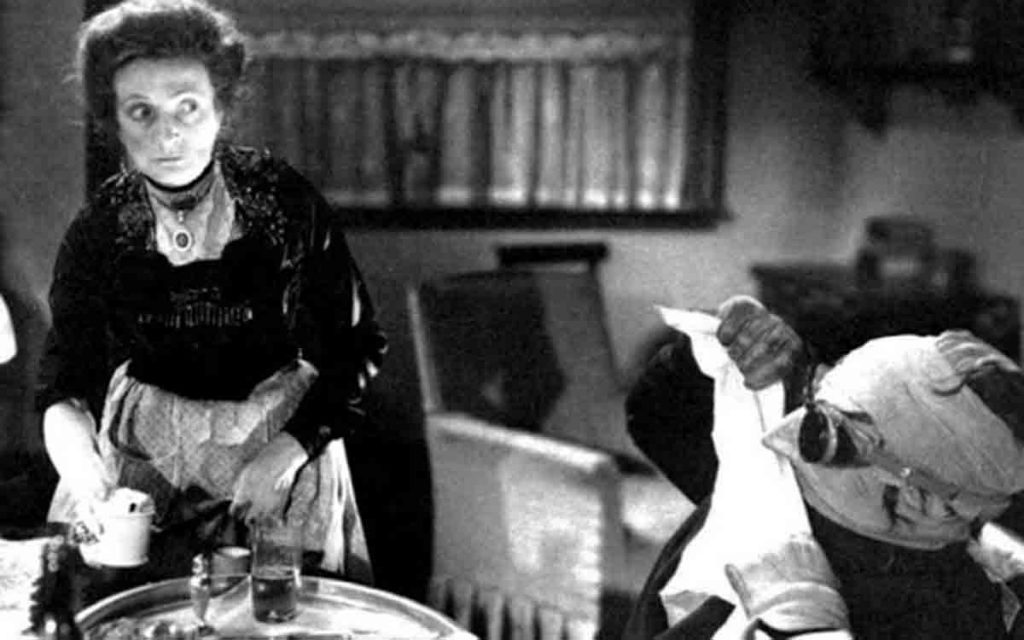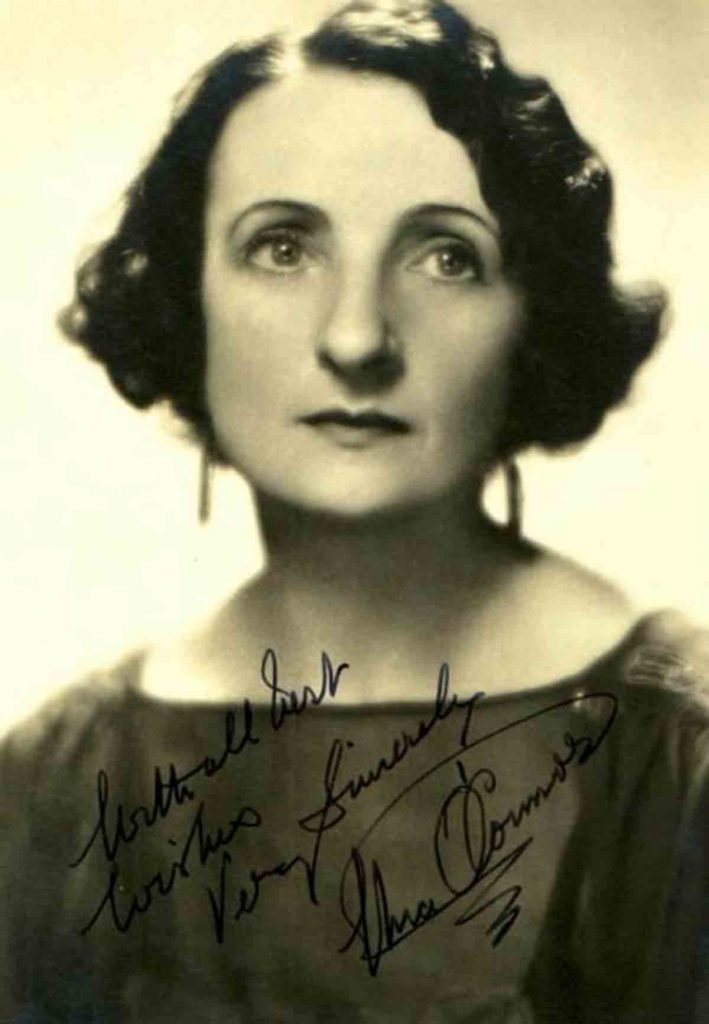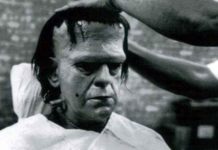Una O’Connor’s shrieking is familiar to anyone interested in Universal Horror. TERRY SHERWOOD looks at the Belfast-born actress behind the screams

When discussing the horror film, there is a tendency to dwell on a male actor who is the monster or ‘fiend.’ Women are consigned to being scream queens or the odious and outdated ‘final girl’.
Rarely are those female characters who are not victims in today’s cinema talked about. They are the ones that enrich the scenes. Well, perhaps not so much in some of today’s smile pretty and slice them up style, but in the days of classic horror they were key performers. One such of these was the very talented Una O Connor.
Who was Una O’Connor?
Una O’Connor was born Agnes Teresa McGlade, 23 October, 1880 into a Catholic Nationalist family in Belfast, Ireland.
Una tread the boards, working extensively in theatre before going to Hollywood and becoming a character actress in film and in television. She would often be the quirky wife, wise cracking housekeeper or servant. Her mother died when McGlade was two years old. Her father was a farmer. Circumstances being what they were caused him to immigrate to Australia, where McGlade was brought up by a relative. She attended St Dominic’s School in Belfast and convent schools in Paris, and had aspirations to go into teaching.
She enrolled in the Abbey School of Acting run by Dublin’s Abbey Theatre, where she performed in many productions till 1943 and changed her name to Una O’Connor.
When Autumn Fire toured the US, opening first in Providence, Rhode Island, a critic wrote: “Una O’Connor, who plays Ellen Keegan, the poor drudge of a daughter, bitter against life and love, does fine work. Her excellence will undoubtedly win her the love of an American public.” Film appearances followed, usually uncredited including work with the Alfred Hitchcock film, Murder (1930).
The role that brought O’Connor to the forefront was not a horror or mystery role, but when Noël Coward himself selected her to appear in Cavalcade at the Theatre Royal Drury Lane, in 1933.
Luck was with O’Connor that day as her savings were running out when Coward told her that he had watched her for years and wrote the part of the Edwardian servant with her in mind. An active lesson for today’s performers on stage as one never knows who is watching. Hollywood executives were in the audience, which led to her signing for the same role in the film version of Cavalcade, released in 1933. Una O’Connor remained in the USA after the film was completed.

Classic Horror fans know her comic performances in James Whale’s The Invisible Man (1933) as the publican’s wife, where she has ample opportunity to leap in fright, pop her eyes out, yell and scream, run away while holding her skirts, and generally work herself into mad screams to the delight of the audience.
James Whale cast her in Bride of Frankenstein (1935) as the Baron’s housekeeper. O’Connor carries on about seeing the Monster ‘roasted alive before her very eyes’ only to come face to face with the monster. Naturally, over the top reaction ensues. She is also briefly seen in the film’s prologue leading dogs on a leash out of frame in the corner.
O’Connor became known to film fans as well with a host of memorable roles including work in The Adventures of Robin Hood (1939) and the Sea Hawk (1940), along with supporting roles in stage productions.
She achieved an outstanding success in the role of Janet McKenzie, the nearly deaf housemaid, in Agatha Christie’s Witness for the Prosecution at Henry Miller’s Theatre on Broadway from 1954–56; she also appeared in the film version in 1957, directed by Billy Wilder as the comic relief. This was to be her final film performance as the new medium of television opened to those that wanted to take the chance.

Una O’Connor, the later years
In 1952, O’Connor authored an article saying she had been in 38 productions that year. She found television to require not only acting skills but one needed to be quick witted and alert at all times. She became a United States citizen in 1952.
In demand, O Connor worked in many roles but always came back to the servant or housekeeper.
Like countless other actors who became typecast in genre roles she became ‘happily resigned’ to the idea. She wrote “There’s no such thing as design in an acting career. You just go along with the tide. Nine times out of ten one successful part will set you in a rut from which only a miracle can pry you.”
Una O’Connor was diagnosed with a ‘weak heart’ in 1932. It began when she was detained with other immigrants on Ellis Island. During her theatre work on Witness for the Prosecution in 1954, O’Connor was bedridden and only went out to do the performances.
The collective public can be unforgiving to performers that try different roles. They do not or rarely accept actors identified with a style of film or character in other stories. The typecast actor is still a working actor, as long as their type is in vogue or they make a change.
Boris Karloff was lucky in the Horror business. Bela Lugosi, however, was not. Her scrawny neck, thin lips, weak chin, pointy nose and bulging eyes made her ideal for excitable housemaids, ornery aunts and the like, and she worked for as long as she wanted to.
O ‘Connor died, having never married or had children, in New York from heart disease, in her 78th year, on 4 February 1959 at the Mary Manning Walsh Home. She had been living in a small apartment in Manhattan.
Watch Una O’Connor Scream!
What’s your favourite film with Una O’Connor? Tell us in the comments section below!









